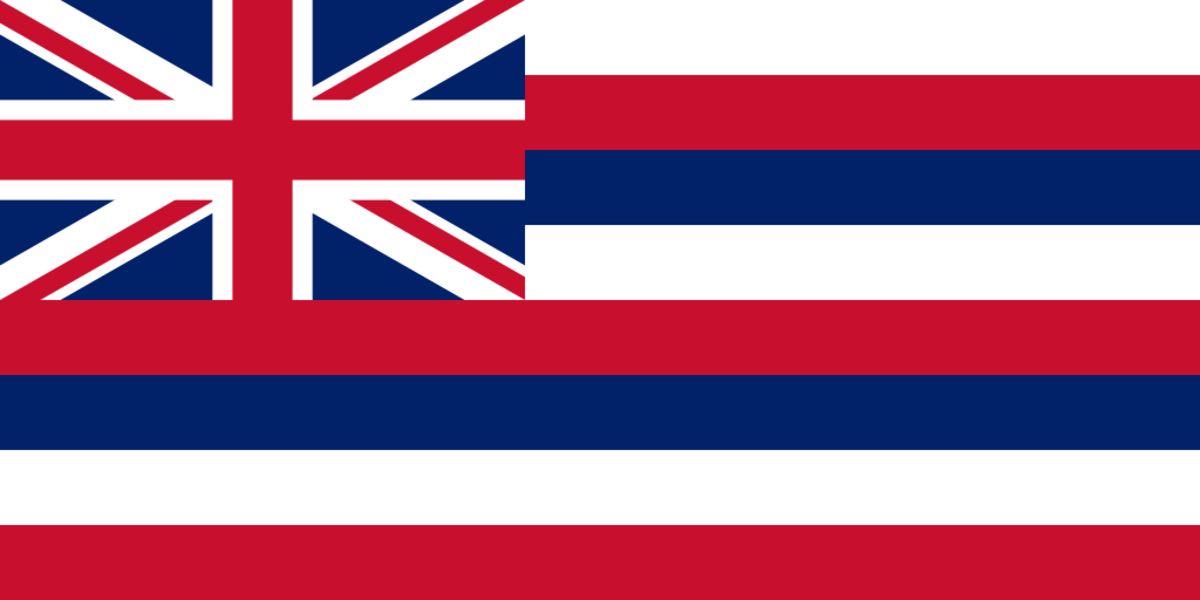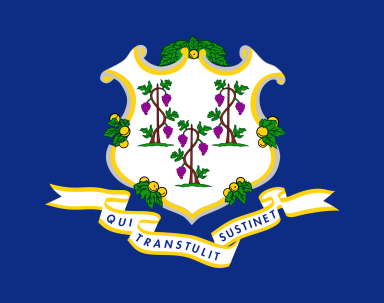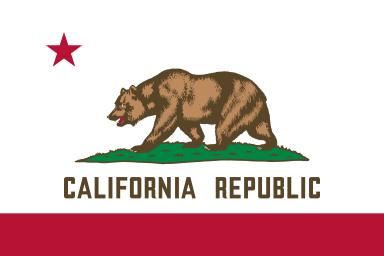Hawaii is a favorite destination for motorcycle riders, given its long stretches of coastal roads, rugged mountain trails, and year-round temperate weather. Approximately 50,000 motorcyclists ply the state’s roadways, as tourists and residents alike opt for the ease of motorcycle drives within the scenic archipelago.
Though the motor vehicle fatality rate in Hawaii tends to be low year-to-year, the state government has enacted several measures to uphold traffic safety and the personal well-being of motorcycle riders. Hawaii saw 94 traffic deaths in 2021, but a disproportionate 33 of these fatalities were motorcycle, moped, and scooter operators.
In this article, we will explore the various laws that apply to motorcyclists in the Aloha State, including safety regulations, motorcycle-specific traffic rules, and insurance requirements. Whether you are a local of Hawaii or a visitor, understanding these laws can help you stay safe while enjoying your ride and, should the unfortunate occur, assist you with finding your options and applicable protections in the state’s motorcycle accident laws.
Licensing Laws for Motorcycle Drivers in Hawaii
Hawaii’s motorcycle drivers must carry a valid motorcycle license, which is a Type 2 designation. Note that a driver’s license for a four-wheel motor vehicle is a separate document altogether. If you drive without a license, with an expired license, or with a revoked license, you could face up to 30 days in jail and a fine of up to $1,000.
Because operating a motorcycle requires a different set of skills than driving a car, there is a different process for obtaining a motorcycle designation. You must first obtain a motorcycle instruction (Class 2) permit, which comes with its own set of requirements, including passing a motorcycle written knowledge test and a vision screening.
Once you have an instruction permit, a new set of rules and regulations come into play. Under the permit phase, motorcycle drivers cannot transport passengers in their vehicles or drive at night. A skills test must be taken to renew the instruction permit, but drivers can opt to graduate to finally get a motorcycle designation.
Motorcyclists can either take a motorcycle road test or get a waiver for that road test in the form of proof that they passed a state-certified motorcycle safety course. As of this writing, only Leeward Community College in Oahu is state-certified to offer this course. Note that in Hawaii, a Motorcycle Safety Foundation completion card is not considered a road test waiver. After all these permit applications and tests, motorcycle operators must then head to their county’s Department of Motor Vehicles to get their driver’s license.
Teen drivers who want to skip some steps and get a motorcycle designation at the same time as their driver’s license can take the Driver Education Graduated Licensing program.
Hawaii Motorcycle Helmet and Safety Gear Laws
Only motorcycle drivers and passengers between the ages of seven and 18 are required by Hawaii state law to wear motorcycle helmets with chin straps. (Note that children under the age of seven are not allowed to ride motorcycles.) The Hawaii Department of Transportation (HIDOT), however, enjoins all motorcycle riders to wear the right protective gear on the road to avoid serious injuries or worse: In 2020, 78% of motorcycle crash fatalities in Hawaii involved riders who were not wearing a helmet.
The state recommends using helmets that comply with state and US Department of Transportation guidelines, particularly those bearing a label from the Snell Memorial Foundation. Helmets, whether full-face or three-quarters coverage, must allow the wearer to see as far to the sides as necessary, must fit the head snugly and should be securely fastened while operating the motorcycle.
If the rider forgoes wearing a helmet and the motorcycle does not have a windscreen or windshield, HIDOT recommends the use of eye protection or an impact-resistant face shield.
Motorcycle Equipment and Parts Regulations
Federal Motor Vehicle Safety Standards, which guarantee that vehicles are roadworthy, set minimum equipment requirements for motorcycles in Hawaii. Motorcycles must be equipped with a permanent seat, horn, brakes and brake light, headlight, tail light, and muffler—all properly placed and functioning. At least one mirror is required by law to be positioned to show the driver a view of the road for at least 200 feet to the rear.
The HIDOT Motorcycle Operator Manual also reminds drivers that motorcycles must be equipped with footrests, as well as fenders or mudguards. Raising the vehicle’s handlebars over 15 inches above the level of the driver’s seat is also against the law.
Motorcycle riders can only operate their vehicles while sitting astride the seat and facing forward, with no obstructions to their line of sight. Drivers may not transport passengers if their seats are not built for more than one person.
It is against the law for motorcycle owners to modify their vehicles' exhaust systems in a way that increases the muffler's noise output. Under Section 291-24 of the Hawaii Revised Statutes, a violation of the motorcycle muffler law results in a fine of up to $100.
In 2023, a bill was introduced before state legislation, proposing to increase the fine to a maximum of $300 to help curb the rising levels of noise pollution in Hawaii. It has also been proposed that a violation of the motorcycle muffler law be elevated to a petty misdemeanor.
Hawaii Roadway Laws for Motorcycles
Since the rights and responsibilities of motor vehicle drivers naturally apply to motorcycle operators, all motorcycles are entitled to full use of a traffic lane and must abide by all traffic regulations that apply to four-wheeled vehicles. However, to account for the dimensions and roadway behavior of motorcycles, some additional special rules apply.
Lane-splitting is illegal in Hawaii; motorcycles must not be operated between traffic lanes, adjacent lines, or rows of other vehicles. Additionally, motorcycles must not pass in the same lane as the vehicle they are overtaking. In addition, motorcycles are prohibited from riding side-by-side or more than two abreast in a single lane.
And contrary to many action movies, Hawaii statutes prohibit motorcycle riders from clinging or attaching themselves or their motorcycle to another vehicle on the roadway.
Bicycle lanes or bike paths are off-limits to motorcycles, as state law sets strict differences between bikes and motorcycles. Motorcycles are also generally prohibited from riding on the shoulder of the road. HIDOT designates and marks certain shoulders for motorcyclists, but the lane-splitting and lane-sharing laws still apply even in these locations.
Hawaii Motor Vehicle Pursuit Laws
Hawaii law enforcement is mandated by law to engage in motor vehicle pursuit of a motorcycle operator. The common rationales for initiating a pursuit are motorcycle drivers refusing to yield when signaled or directed by the police to stop and active attempts to elude law enforcement due to criminal activity. The state follows vehicle pursuit regulations recommended by the International Association of Chiefs of Police.
This system is primarily discretionary, where police personnel can decide whether they will engage in pursuit or not. In making this decision, police are expected to consider how the chase can jeopardize the well-being of the public, themselves, and the motorcyclist suspected of wrongdoing.
Hawaii Motorcycle Insurance Requirements
All motorcycle drivers in Hawaii are required by law to carry liability insurance. The motorcycle liability policy must have the following:
$10,000 per person personal injury protection benefits to pay for the medical fees of the motorcyclist/policyholder and passenger;
$20,000 per person and $40,000 per accident bodily injury liability to cover costs related to the injury or death of another person in a motorcycle accident; and
$10,000 per occurrence property damage liability to cover the repair or replacement costs of other people’s property that a policyholder damaged.
The above figures are minimum amounts, and operators can opt for higher liability coverage. Motorcycle owners can also buy personal injury medical payments coverage, up to $10,000; an income disability plan; and damage coverage for the policyholder’s motorcycle.
A motorcycle liability policy can only be purchased with a valid motorcycle license. Drivers with a learner’s permit must have completed a motorcycle education course administered by the University of Hawaii and approved by HIDOT.
Valid liability insurance identification must be kept with the motorcycle or carried by the driver at all times, and operators must furnish this to law enforcement upon request. An amendment to the statute allows drivers to share insurance ID from a mobile device like a smartphone. If a motorcycle driver cannot provide proof of insurance, law enforcement will issue a citation containing the earliest possible date for a court appearance.
The penalties a motorcyclist can face if he is found to be driving without insurance are:
$500 in fines for the first offense, and a minimum of $1,500 fine for each subsequent offense within a five-year period; or community service in lieu of fines
License suspension, which ranges from a three-month suspension for the first conviction to a one-year suspension for further violations within a five-year period.
Further violations of motorcycle insurance laws within five years of a prior offense will subject an erring motorcyclist to jail time of no more than 30 days; suspension or revocation of motorcycle registration; the confiscation, impoundment, or sale of the motorcycle; or any combination of these penalties.
Hawaii Is a No-Fault State for Insurance Claims
Because Hawaii is a no-fault state for insurance claims, motorcyclists can turn to their own insurance to cover the cost of their losses following a motorcycle accident. Under their personal injury protection policy, the motorcycle driver’s insurance company can pay for his medical fees and repair costs up to the policy’s limits, regardless of fault.
The state’s minimum insurance requirements offer further financial protection. Motorcycle accident victims have the option to file a claim with the insurance company of the at-fault party through a third-party liability claim, especially if the cost of their incurred losses exceeds their policy limits. This is often a recourse if the accident results in severe injuries, which, unfortunately, are likely for motorcycle riders given their unenclosed vehicle.
Catastrophic injuries such as permanent disfigurement, spinal cord injuries, and severe head trauma are common among motorcyclists who have gotten into an accident with, say, a car driver. The cost of physical recovery alone is high, and motorcycle accident victims with severe injuries and those who exceed their PIP coverage by $5,000 also have the option of filing a personal injury lawsuit against the at-fault party.
How Much Can Someone Sue for a Motorcycle Accident in Hawaii?
Plaintiffs can seek financial compensation or economic damages for their medical bills, rehabilitation costs, loss of income, and property damage repairs and replacement. There is, however, no standard formula for calculating a plaintiff’s economic losses because factors surrounding injuries caused by another’s negligence naturally vary.
The matter of compensating a victim’s pain and suffering is a difficult one, as there are no court-set metrics for juries to follow. In assigning a dollar value to a motorcycle accident victim’s long-term emotional distress, for example, juries can evaluate medical histories, the likelihood of recovery, and the case presented by the plaintiff’s legal team. Note that Hawaii puts a limit on non-economic damages at $375,000. Exceptions to this cap can apply to lawsuits with multiple defendants and cases where harm was done intentionally.
An accident attorney can help determine liability and fault. Economic and non-economic damages can be sought from the following: the driver your motorcycle collided with; pedestrians who knowingly jaywalked into oncoming traffic; government agencies who were negligent in maintaining safe road conditions; designers and manufacturers of motorcycles with faulty parts; and even the motorcyclist’s mechanic if their tampering of the vehicle led to an accident.
Hawaii Is a Modified Comparative Negligence State for Motorcycle Accident Lawsuits
If you decide to pursue justice and compensation through the courts following your motorcycle accident, it is useful to understand the modified comparative negligence rule that Hawaii follows. According to Hawaii Revised Statutes section 663-31, a motorcycle accident lawsuit plaintiffs’ share of the responsibility for the crash must not be more than 50%. Otherwise, they are barred from receiving compensation for their losses.
The statutes also set any awarded damages relative to a plaintiff’s liability. The compensation you receive as a motorcycle accident victim will be reduced according to your percentage of the blame for the incident. If a motorcyclist is seeking $100,000 in damages, but the jury finds him to be 10% at fault for the accident, then the damages he can receive will be reduced by 10% as well, equal to $90,000.
Hawaii Statute of Limitations for Motorcycle Accidents
Motorcycle crash victims generally have two years from the date of their accident to file a lawsuit against at-fault parties. Plaintiffs that go beyond this deadline or statute of limitations often have their cases time-barred, rendering them unable to secure compensation. This is why personal injury victims in the state are enjoined to consider their legal options as soon as possible, especially once the extent of their losses comes to light.
For plaintiffs who were minors at the date of the accident, the two-year statute of limitations begins when they turn 18. For motorcycle accident victims who were incapacitated due to the accident, the two-year deadline begins once they recover enough to take part in the legal process. Exceptions can also apply for motor vehicle accidents where personal injury protection coverage is used, though the deadline extension varies from case to case.
Legal Resources for Hawaii Motorcycle Accident Victims
HIDOT Motorcycles General Information
The Hawaii Department of Transportation maintains a primer on pertinent laws and regulations for the state’s motorcycle operators. This page includes information on licensing, obtaining a motorcycle designation, and rules for motorcyclists who are minors. It also provides links to frequently asked questions and a downloadable copy of the state’s Motorcycle Operators Manual.
Street Bikers United Hawaii
Street Bikers United Hawaii (SBU) is a non-profit advocacy organization that promotes motorcyclist rights across the state. It contains road and traffic safety initiatives for motorcyclists and technical advisories. SBU has been officially recognized by the Hawaii House of Representatives and the Hawaii State Senate for its public service.
HI Lawyer Referral & Information Service
The Hawaii State Bar Association maintains a public service through an attorney search and lawyer referral and information portal on its website. It is the only bar-sponsored attorney referral in the state. The referrals themselves are free, but potential clients must then discuss with member attorneys the cost of their legal services.
Hawaii Legal Assistance Directory
The Hawaii State Bar Association offers a public directory of sources of legal assistance—including free legal aid services, lists of legal self-help clinics across the state, and mediation centers. It also connects motorcycle accident victims to resources from the Hawaii Disability Rights Center and organizations that specifically cater to indigenous peoples.
Step into the world of Expertise.com, your go-to hub for credible insights. We don't take accuracy lightly around here. Our squad of expert reviewers, each a maestro in their field, has given the green light to every single article you'll find. From rigorous fact-checking to meticulous evaluations of service providers, we've got it all covered. So feel free to dive in and explore. The information you'll uncover has been stamped with the seal of approval by our top-notch experts.





